|
News Archive: June 28-July 31 |

|
NASA ponders spacewalk repair work on shuttle
Engineers are considering what, if anything, to do about two protruding "gap fillers" on the belly of the space shuttle Discovery that could trigger increased re-entry turbulence and localized, potentially dangerous, heating if they are left as is.
 FULL STORY FULL STORY
 |  |

|
 |

Additional coverage for subscribers:
 VIDEO:
MANAGEMENT TEAM UPDATE DIAL-UP | BROADBAND 1 & 2 VIDEO:
MANAGEMENT TEAM UPDATE DIAL-UP | BROADBAND 1 & 2
 VIDEO:
SUNDAY'S MISSION STATUS DIAL-UP | BROADBAND VIDEO:
SUNDAY'S MISSION STATUS DIAL-UP | BROADBAND
 AUDIO:
LISTEN TO THE STATUS BRIEFING MP3 FILE AUDIO:
LISTEN TO THE STATUS BRIEFING MP3 FILE
 SUBSCRIBE NOW SUBSCRIBE NOW

|
Rocket booster cameras offer dazzling views
When space shuttle Discovery launched its two solid-fuel booster rockets were equipped with video cameras. Although not seen live, that footage has been recovered from the spent boosters after they were retrieved from the Atlantic Ocean. The video includes dramatic coverage of separation from the external fuel tank and splashdown in the sea.
 |  |

|
 |

Additional coverage for subscribers:
 VIDEO:
LEFT-HAND BOOSTER SEPARATION FROM TANK PLAY VIDEO:
LEFT-HAND BOOSTER SEPARATION FROM TANK PLAY
 VIDEO:
LEFT-HAND BOOSTER CHUTE DEPLOY AND SPLASHDOWN PLAY VIDEO:
LEFT-HAND BOOSTER CHUTE DEPLOY AND SPLASHDOWN PLAY
 VIDEO:
FULL CLIP FROM LEFT-HAND BOOSTER PLAY VIDEO:
FULL CLIP FROM LEFT-HAND BOOSTER PLAY
 VIDEO:
RIGHT-HAND BOOSTER SEPARATION FROM TANK PLAY VIDEO:
RIGHT-HAND BOOSTER SEPARATION FROM TANK PLAY
 VIDEO:
RIGHT-HAND BOOSTER SPLASHDOWN PLAY VIDEO:
RIGHT-HAND BOOSTER SPLASHDOWN PLAY
 VIDEO:
FULL CLIP FROM RIGHT-HAND BOOSTER PLAY VIDEO:
FULL CLIP FROM RIGHT-HAND BOOSTER PLAY
 SUBSCRIBE NOW SUBSCRIBE NOW

|
Shuttle mission extended to give bonus day at station
NASA's mission management team Saturday extended the shuttle Discovery's flight by one day, giving the astronauts more time to assist and resupply the international space station's two-man crew, and concluded the shuttle's heat-shield tiles and insulation blankets are fit for a normal re-entry Aug. 8.
 FULL STORY FULL STORY
 |  |

|
 |

Additional coverage for subscribers:
 VIDEO:
UPDATE ON SHUTTLE AND STATION DIAL-UP | BROADBAND 1 & 2 VIDEO:
UPDATE ON SHUTTLE AND STATION DIAL-UP | BROADBAND 1 & 2
 AUDIO:
LISTEN TO THE PROGRAM BRIEFING MP3 FILE AUDIO:
LISTEN TO THE PROGRAM BRIEFING MP3 FILE
 VIDEO:
SATURDAY'S MISSION STATUS DIAL-UP | BROADBAND 1 & 2 VIDEO:
SATURDAY'S MISSION STATUS DIAL-UP | BROADBAND 1 & 2
 SUBSCRIBE NOW SUBSCRIBE NOW

|
First spacewalk of the mission meets all objectives
Astronauts Stephen Robinson and Soichi Noguchi wrapped up a smooth spacewalk Saturday, testing heat-shield repair techniques, hot wiring one of the space station's gyroscopes and mounting an attachment device that later will hold a large external tool kit and spare parts box.
 FULL STORY FULL STORY
 HEAT SHIELD REPAIR TESTS HEAT SHIELD REPAIR TESTS
 PREVIEW STORY PREVIEW STORY
 |  |

|
 |
Tenth planet found!
A team of astronomers systematically scanning the far reaches of the solar system has discovered a distant, icy world that is bigger than Pluto but so far away the head of a pin held at arm's length would blot out the sun. The discovery, if confirmed, would force astronomers to re-write their textbooks and give school kids a 10th planet to memorize once a governing body sanctions the still-secret name proposed by a trio of discoverers.
 FULL STORY FULL STORY
 |  |
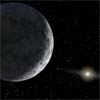
|
 |

Additional coverage for subscribers:
 AUDIO:
LISTEN TO PLANET DISCOVERY ANNOUNCEMENT PLAY AUDIO:
LISTEN TO PLANET DISCOVERY ANNOUNCEMENT PLAY
 SUBSCRIBE NOW SUBSCRIBE NOW

|
'Land Launch' books first commercial mission
Sea Launch announced Thursday it has received its first payload contract to use its new "Land Launch" concept to begin commercial flights originating from the Baikonur Cosmodrome in Kazakhstan in 2007, bringing the provider into a new medium-class market for communications satellites.
 FULL STORY FULL STORY
 |  |

|
 |
Griffin doesn't rule out quick resumption of flights
NASA Administrator Michael Griffin mounted a spirited defense of the shuttle program and the beleaguered external tank project Friday, saying virtually all of NASA's post-Columbia improvements to the huge tank worked as expected during Discovery's launching Tuesday. He said the space agency was not yet ready to rule out another shuttle flight before the end of the year.
 FULL STORY FULL STORY
 |  |

|
 |
Shuttle commander says foam problem must be fixed
The shuttle Discovery's crew was surprised and disappointed to learn about foam insulation falling off their ship's external tank during launch. Commander Eileen Collins said Friday the shuttle program should remain grounded until the problem is fixed, but she said talk of retiring the winged spaceplanes is premature.
 FULL STORY FULL STORY
 |  |

|
 |

Additional coverage for subscribers:
 VIDEO:
FRIDAY'S MISSION STATUS DIAL-UP | BROADBAND 1 & 2 VIDEO:
FRIDAY'S MISSION STATUS DIAL-UP | BROADBAND 1 & 2
 AUDIO:
LISTEN TO THE STATUS BRIEFING MP3 FILE AUDIO:
LISTEN TO THE STATUS BRIEFING MP3 FILE
 SUBSCRIBE NOW SUBSCRIBE NOW

|
Timing of foam loss saved Discovery from big hit
The shuttle Discovery's crew might have dodged a bullet when a piece of foam debris broke away from an aerodynamic ramp on the side of the ship's external fuel tank during launch Tuesday. Had the foam broken away earlier, when the shuttle was deeper in Earth's atmosphere, the chunk could have hit the orbiter with potentially catastrophic results, engineers said Thursday.
 FULL STORY FULL STORY
 |  |
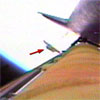
|
 |

Additional coverage for subscribers:
 VIDEO:
DAMAGE ASSESSMENTS BRIEFING DIAL-UP | BROADBAND 1 & 2 VIDEO:
DAMAGE ASSESSMENTS BRIEFING DIAL-UP | BROADBAND 1 & 2
 SUBSCRIBE NOW SUBSCRIBE NOW

|
Discovery does pirouette, then docks to space station
Commander Eileen Collins guided the space shuttle Discovery to a picture-perfect docking with the international space station Thursday, a major milestone in a mission now overshadowed by a crisis of confidence in NASA after the grounding of the shuttle fleet Wednesday.
 FULL STORY - (photos added) FULL STORY - (photos added)
 DOCKING TIMELINE DOCKING TIMELINE
 |  |

|
 |

Additional coverage for subscribers:
 VIDEO:
THURSDAY MISSION STATUS DIAL-UP | BROADBAND 1 & 2 VIDEO:
THURSDAY MISSION STATUS DIAL-UP | BROADBAND 1 & 2
 AUDIO:
LISTEN TO THE MISSION STATUS BRIEFING MP3 FILE AUDIO:
LISTEN TO THE MISSION STATUS BRIEFING MP3 FILE
 VIDEO:
BEHIND THE SCENES IN MISSION CONTROL FOR DOCKING PLAY VIDEO:
BEHIND THE SCENES IN MISSION CONTROL FOR DOCKING PLAY
 VIDEO:
SHUTTLE CREW WELCOMED ABOARD THE STATION PLAY VIDEO:
SHUTTLE CREW WELCOMED ABOARD THE STATION PLAY
 VIDEO:
COMMANDER COLLINS GUIDES DISCOVERY TO DOCKING PLAY VIDEO:
COMMANDER COLLINS GUIDES DISCOVERY TO DOCKING PLAY
 VIDEO:
DISCOVERY'S BACKFLIP AS SEEN FROM STATION PLAY VIDEO:
DISCOVERY'S BACKFLIP AS SEEN FROM STATION PLAY
 VIDEO:
STATION CAMERAS SEE SHUTTLE'S APPROACH FROM BELOW PLAY VIDEO:
STATION CAMERAS SEE SHUTTLE'S APPROACH FROM BELOW PLAY
 VIDEO:
SHUTTLE PULLS IN FRONT OF STATION FOR DOCKING PLAY VIDEO:
SHUTTLE PULLS IN FRONT OF STATION FOR DOCKING PLAY

 VIDEO:
CREW'S CAMCORDER VIDEO OF JETTISONED FUEL TANK PLAY VIDEO:
CREW'S CAMCORDER VIDEO OF JETTISONED FUEL TANK PLAY
 SUBSCRIBE NOW SUBSCRIBE NOW

|
Foam loss must be fixed before shuttle flies again
In a major setback for NASA, senior managers Wednesday grounded the shuttle fleet, saying no more missions will be launched until engineers figure out why large, potentially catastrophic pieces of foam insulation broke away from the shuttle Discovery's external fuel tank during launch Tuesday.
 FULL STORY FULL STORY
 IMAGES: VIEWS OF TANK WITH MISSING FOAM IMAGES: VIEWS OF TANK WITH MISSING FOAM
 |  |

|
 |

Additional coverage for subscribers:
 VIDEO:
NASA GROUNDS SHUTTLE PROGRAM DIALUP VIDEO:
NASA GROUNDS SHUTTLE PROGRAM DIALUP
BROADBAND VERSION: PART 1 & PART 2
 AUDIO:
LISTEN TO PROGRAM NEWS CONFERENCE FOR IPOD AUDIO:
LISTEN TO PROGRAM NEWS CONFERENCE FOR IPOD
 VIDEO:
WEDNESDAY MISSION STATUS BRIEFING DIAL-UP | BROADBAND VIDEO:
WEDNESDAY MISSION STATUS BRIEFING DIAL-UP | BROADBAND
 VIDEO:
SHUTTLE FUEL TANK HITS BIRD AT LIFTOFF PLAY VIDEO:
SHUTTLE FUEL TANK HITS BIRD AT LIFTOFF PLAY
 SUBSCRIBE NOW SUBSCRIBE NOW

|
Advanced technologies picked for NASA project
NASA's Science Mission Directorate has selected 11 technology investigators as part of the New Millennium Program's Space Technology 9 Project, including solar sails, precision formation flying of spacecraft and descent guidance for pinpoint landings on other worlds.
 FULL STORY FULL STORY
 |  |
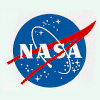
|
 |
OTHER HEADLINES Additional stories today
|
 |
NASA helps smooth bumpy airline rides -- Most airline passengers and flight crews have one thing in common: they don't like turbulence. Researchers at NASA's Langley Research Center and AeroTech Research have developed an automatic turbulence reporting system, which is being tested on more than 80 Delta Airlines passenger jets.

Exploratory studies for quieting sonic boom funded -- NASA and several industry teams are studying how to design and build an aircraft that could demonstrate technology to lessen the noise and window-rattling effects of supersonic flight.
|
 |
Supernova won't fade away
Scientists have found that a star that exploded in 1979 is as bright today in X-ray light as it was when it was discovered years ago, a surprise finding because such objects usually fade significantly after only a few months.
 FULL STORY FULL STORY
 |  |

|
 |
OTHER HEADLINES Additional stories today
|
 |
NASA brings exploration's future to Oshkosh -- Aircraft flying over Mars and supersonic transports so quiet they can fly over land on Earth are in NASA's view of the future at Experimental Aircraft Association's (EAA) AirVenture 2005, July 25-31 in Oshkosh, Wis.

New Centennial Challenge -- NASA, in collaboration with the Volanz Aerospace Inc./Spaceflight America, has announced a new Centennial Challenges prize competition. The Astronaut Glove Challenge award will go to the team that can design and manufacture the best performing glove within competition parameters. The $250,000 purse will be awarded at a competition scheduled for November 2006, when competing teams test their glove designs against each other.

NASA Quest challenges students to study Mars on Earth -- As NASA turns its attention to preparing for human travel to the Moon and Mars, there are many hurdles to overcome. This fall, the NASA Exploration Systems Mission Directorate and NASA Quest will open the school year with a challenge to students, primarily in grades 5-8, to work with NASA scientists to design solutions to these obstacles.

Astrium to build ASTRA 1M -- SES ASTRA is pleased to announce that it has awarded the contract for the construction of its ASTRA 1M satellite to European manufacturer EADS Astrium. The satellite will provide a full range of television broadcasting services, including HDTV and other advanced audiovisual as well as broadband services.

PanAmSat buys Europe*Star -- PanAmSat announced that it had signed an agreement with Alcatel, the French-based communications leader, for the acquisition of multiple European orbital slots as well as a powerful satellite with a footprint over Europe, the Middle East, Africa and Asia.
|
 |
NEAR mission gives clues to composition of asteroid Eros
An asteroid's external features, when analyzed carefully, can say a lot about its interior. So it was while he was mapping the surface of the asteroid 433 Eros that Peter Thomas, a senior research associate in astronomy at Cornell University, found a simple solution to an earlier puzzle about the asteroid's composition.
 FULL STORY FULL STORY
 |  |
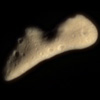
|
 |
Dustiest star could harbor a young Earth
A relatively young star located about 300 light-years away is greatly improving our understanding of the formation of Earth-like planets. The star is shrouded by the dustiest environment ever seen so close to a Sun-like star well after its formation. The warm dust is believed to be from recent collisions of rocky bodies at distances from the star comparable to that of the Earth from the Sun.
 FULL STORY FULL STORY
 |  |

|
 |
Study: Mars in deep freeze for past 4 billion years
The current mean temperature on the equator of Mars is a blustery 69 degrees below zero Fahrenheit. Scientists have long thought that the Red Planet was once temperate enough for water to have existed on the surface, and for life to possibly have evolved. But a new study by Caltech and MIT scientists gives this idea the cold shoulder.
 FULL STORY FULL STORY
 |  |
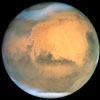
|
 |
NASA plans Tuesday launch pending final test results
Troubleshooters may have found the cause of the fuel sensor malfunction that grounded the shuttle Discovery last week. Additional tests are planned, but the analysis to date, along with a proposed wiring modification, prompted NASA managers Wednesday to forego another fueling test and to press ahead instead for a launch attempt Tuesday at 10:39 a.m. EDT (1439 GMT).
 FULL STORY FULL STORY
 ENGINE CUT-OFF SENSOR BACKGROUND ENGINE CUT-OFF SENSOR BACKGROUND
 MISSION STATUS CENTER - live updates! MISSION STATUS CENTER - live updates!
 |  |

|
 |

Additional coverage for subscribers:
 VIDEO:
FOOTAGE INSIDE DISCOVERY OF TROUBLESHOOTING PLAY VIDEO:
FOOTAGE INSIDE DISCOVERY OF TROUBLESHOOTING PLAY
 VIDEO:
LAUNCH PLANS ANNOUNCED AT BRIEFING DIAL-UP | BROADBAND VIDEO:
LAUNCH PLANS ANNOUNCED AT BRIEFING DIAL-UP | BROADBAND
 AUDIO:
LISTEN TO THE NEWS BRIEFING FOR IPOD AUDIO:
LISTEN TO THE NEWS BRIEFING FOR IPOD
 MORE: SHUTTLE RETURN TO FLIGHT VIDEO LISTING MORE: SHUTTLE RETURN TO FLIGHT VIDEO LISTING
 SUBSCRIBE NOW SUBSCRIBE NOW

|
Shuttle managers make launch date announcement
Did you miss Wednesday night's news conference from Kennedy Space Center announcing Discovery's launch date? You can watch the briefing, plus footage of workers inside the shuttle testing the engine cutoff sensor system and literally hours and hours of video covering preparations for the return to flight mission via our Spaceflight Now Plus service.
 FULL COVERAGE FULL COVERAGE
 |  |

|
 |
Russians issue report on solar sail's botched launch
A group of Russian engineers has made its final report on last month's failure of a privately funded mission to test the world's first solar sail in space. The group financing the flight responded sharply with criticism toward project and launch vehicle teams.
 FULL STORY FULL STORY
 |  |

|
 |
Clues to mysterious neutron star interiors
A gigantic explosion on a neutron star halfway across the Milky Way galaxy, the largest such explosion ever recorded in the universe, should allow astronomers for the first time to probe the interiors of these mysterious stellar objects.
 FULL STORY FULL STORY
 |  |

|
 |
Fantasy made real at Saturn
The majesty of Saturn overwhelms in this image from Cassini. Saturn's moon Tethys glides past in its orbit, and the icy rings mask the frigid northern latitudes with their shadows.
 FULL STORY FULL STORY
 |  |

|
 |
Saturn's ring shepherds
The moons Prometheus and Pandora are captured here in a single image taken by the Cassini spacecraft from less than a degree above the dark side of Saturn's rings. Prometheus is 63 miles across. Pandora is 52 miles across. The two moons are separated by about 43,000 miles in this view.
 FULL STORY FULL STORY
 |  |

|
 |
NASA mulls launch options
NASA managers Monday told the shuttle launch team to gear up for a possible attempt to launch Discovery next Tuesday if troubleshooters can either fix the fuel sensor problem that grounded the ship last week or gather enough data to prove it won't affect other sensors this time around.
 FULL STORY FULL STORY
 ENGINE CUT-OFF SENSOR BACKGROUND ENGINE CUT-OFF SENSOR BACKGROUND
 MISSION STATUS CENTER - live updates! MISSION STATUS CENTER - live updates!
 RETURN TO FLIGHT COVERAGE RETURN TO FLIGHT COVERAGE
 |  |

|
 |

Additional coverage for subscribers:
 VIDEO:
OFFICIALS EXPLAIN OPTIONS MONDAY DIAL-UP | BROADBAND VIDEO:
OFFICIALS EXPLAIN OPTIONS MONDAY DIAL-UP | BROADBAND
 AUDIO:
LISTEN TO THE NEWS BRIEFING FOR IPOD AUDIO:
LISTEN TO THE NEWS BRIEFING FOR IPOD
 SUBSCRIBE NOW SUBSCRIBE NOW

|
Station crew drives Soyuz to new docking port
The International Space Station's two-man crew briefly left its orbital home Tuesday morning. Expedition 11 commander Sergei Krikalev and science officer John Phillips undocked their Soyuz capsule from the Pirs module at 6:38 a.m. EDT, backed 82 feet away, flew sideways for 45 feet and then guided the craft to docking with the Zarya module at 7:08 a.m. The relocation was done in preparation for using the Pirs as an airlock for two upcoming spacewalks.
 STATUS REPORT STATUS REPORT
 |  |

|
 |

Additional coverage for subscribers:
 VIDEO:
WATCH THE SOYUZ RELOCATION FROM START TO FINISH PLAY VIDEO:
WATCH THE SOYUZ RELOCATION FROM START TO FINISH PLAY
 SUBSCRIBE NOW SUBSCRIBE NOW

|
Will oldest known dust disk ever form planets?
Every rule has an exception. One rule in astronomy, supported by considerable evidence, states that dust disks around newborn stars disappear in a few million years. Most likely, they vanish because the material has collected into full-sized planets. Astronomers have discovered the first exception to this rule -- a 25-million-year-old dust disk that shows no evidence of planet formation.
 FULL STORY FULL STORY
 |  |

|
 |
Baffling problem could prompt shuttle fueling test
After a long weekend of troubleshooting, engineers have not found an obvious problem that might explain why one of four hydrogen fuel sensors failed to operate properly during the shuttle Discovery's aborted countdown Wednesday.
 FULL STORY FULL STORY
 |  |

|
 |
Three satellites needed to bring out 'shy star'
An international team of scientists has uncovered a rare type of neutron star so elusive that it took three satellites to identify it. The findings, made with ESA's Integral satellite and two NASA satellites, reveals new insights about star birth and death in our galaxy.
 FULL STORY FULL STORY
 |  |

|
 |
Shuttle's fuel sensor problem remains elusive
Engineers working inside the shuttle Discovery's cramped engine compartment this weekend have not yet found any obvious signs of trouble that might explain what caused one of four fuel sensors to operate improperly during last Wednesday's aborted countdown.
 FULL STORY FULL STORY
 LAUNCH WINDOWS CHART LAUNCH WINDOWS CHART
 |  |

|
 |
Hale 'hopeful' about July launch for shuttle Discovery
Engineers are working around the clock and through the weekend, putting on a "full-court press" to recreate, isolate and eliminate the fuel sensor problem that grounded the shuttle Discovery Wednesday, NASA officials said late Friday.
 FULL STORY FULL STORY
 EARLIER STORY EARLIER STORY
 |  |

|
 |

Additional coverage for subscribers:
 VIDEO:
FRIDAY AFTERNOON NEWS BRIEFING DIAL-UP | BROADBAND VIDEO:
FRIDAY AFTERNOON NEWS BRIEFING DIAL-UP | BROADBAND
 AUDIO:
LISTEN TO THE NEWS BRIEFING FOR IPOD AUDIO:
LISTEN TO THE NEWS BRIEFING FOR IPOD
 VIDEO:
THURSDAY'S UPDATE NEWS CONFERENCE DIAL-UP | BROADBAND VIDEO:
THURSDAY'S UPDATE NEWS CONFERENCE DIAL-UP | BROADBAND
 AUDIO:
LISTEN TO THE NEWS CONFERENCE MP3 FILE AUDIO:
LISTEN TO THE NEWS CONFERENCE MP3 FILE
 SUBSCRIBE NOW SUBSCRIBE NOW

|
Plans come together for China's next manned flight
China's next manned space endeavor could occur as early as October, according to state media reports. The mission would come two years after the first Chinese piloted flight.
 FULL STORY FULL STORY
 |  |

|
 |
Comet Tempel 1 went back to sleep after Deep Impact
Ten days after part of the Deep Impact spacecraft plunged onto Comet Tempel 1 with the aim to create a crater and expose pristine material from beneath the surface, astronomers are back in the European Southern Observatory Offices in Santiago, after more than a week of observing at the La Silla Paranal Observatory.
 FULL STORY FULL STORY
 |  |

|
 |
First planet under three suns is discovered
An extrasolar planet under three suns has been discovered in the constellation Cygnus by a planetary scientist at the California Institute of Technology using the 10-meter Keck I telescope in Hawaii. The planet is slightly larger than Jupiter and, given that it has to contend with the gravitational pull of three bodies, promises to seriously challenge our current understanding of how planets are formed.
 FULL STORY FULL STORY
 |  |

|
 |
Spongy-looking Hyperion tumbles into Cassini's view
Two new Cassini views of Saturn's tumbling moon Hyperion offer the best looks yet at one of the icy, irregularly-shaped moons that orbit the giant, ringed planet. Jagged outlines visible on the moon's surface are indicators of large impacts that have chipped away at its shape like a sculptor.
 FULL STORY FULL STORY
 |  |

|
 |
Fuel sensor glitch forces launch scrub
Shuttle engineers are trying pinpoint why one of four critical hydrogen fuel sensors failed a test late in the shuttle Discovery's countdown Wednesday, forcing NASA managers to scrub the agency's long-awaited return to flight.
 FULL STORY FULL STORY
 EARLIER STORY EARLIER STORY
 RETURN TO FLIGHT COVERAGE RETURN TO FLIGHT COVERAGE
 |  |

|
 |

Additional coverage for subscribers:
 VIDEO:
POST-SCRUB NEWS CONFERENCE DIAL-UP | BROADBAND VIDEO:
POST-SCRUB NEWS CONFERENCE DIAL-UP | BROADBAND
 VIDEO:
WEDNESDAY'S LAUNCH IS SCRUBBED PLAY VIDEO:
WEDNESDAY'S LAUNCH IS SCRUBBED PLAY
 VIDEO:
ASTRONAUTS HEAD FOR LAUNCH PAD PLAY VIDEO:
ASTRONAUTS HEAD FOR LAUNCH PAD PLAY
 VIDEO:
CREW DONS LAUNCH SPACESUITS PART 1 | PART 2 VIDEO:
CREW DONS LAUNCH SPACESUITS PART 1 | PART 2
 VIDEO:
ASTRONAUTS GATHER FOR PRE-LAUNCH SNACK PLAY VIDEO:
ASTRONAUTS GATHER FOR PRE-LAUNCH SNACK PLAY
 VIDEO:
PAD'S ROTATING SERVICE STRUCTURE ROLLED BACK PLAY VIDEO:
PAD'S ROTATING SERVICE STRUCTURE ROLLED BACK PLAY
 SUBSCRIBE NOW SUBSCRIBE NOW

|
Reporters from across the globe descend on the Cape
Members of the news media have descended upon central Florida this week as NASA prepares to launch the first space shuttle mission since Columbia's ill-fated flight two-and-a-half years ago that left the fleet grounded.
 FULL STORY FULL STORY
 |  |

|
 |
Shuttle Discovery flight preps chronicled in video
As excitement builds for the first space shuttle launch in over two years, this comprehensive video selection captures the major pre-flight events for Discovery and her seven astronauts.
 SEE VIDEO COLLECTION SEE VIDEO COLLECTION
 |  |

|
 |
Deep comet impact was a dust-up, not a gusher
Smithsonian astronomers watched as the "Impactor" probe from NASA's Deep Impact spacecraft hit Comet Tempel 1 last week. They monitored the impact using the ground-based Submillimeter Array in Hawaii and NASA's orbiting Submillimeter Wave Astronomy Satellite. Results are still coming in, but so far the scientists report seeing only weak emission from water vapor and a host of other gases that were expected to erupt from the impact site.
 FULL STORY FULL STORY
 |  |

|
 |
Diversity of impacts on Saturn's moon Rhea
Saturn's moon Rhea displays two large impact features here, along the terminator (the boundary between day and night), plus a superb rayed crater to the east. Rhea is 1,528 kilometers (949 miles) across.
 FULL STORY FULL STORY
 |  |

|
 |
New X-ray observatory successfully launched
Five years after the first attempt to launch an observatory with a telescope colder than space itself ended in heartbreak, Japanese and American astronomers are celebrating at last. Their replacement satellite successfully shot into orbit Sunday to study the colors of X-rays and give new insights into the some of the universe's most violent places.
 FULL STORY FULL STORY
 |  |

|
 |
Deep Impact tells a tale of the powder-coated comet
Data from Deep Impact's instruments indicate an immense cloud of fine powdery material was released when the probe slammed into the nucleus of comet Tempel 1 at 6.3 miles per second. The cloud indicated the comet is covered in the powdery stuff.
 FULL STORY FULL STORY
 |  |

|
 |
NASA solicits interest in use of Shuttle Landing Facility
NASA has issued a formal request for expressions of interest by non-NASA organizations, including commercial space companies, for use of the Shuttle Landing Facility at the Kennedy Space Center.
 FULL STORY FULL STORY
 |  |

|
 |
Satellites measure and monitor sea level changes
For the first time, NASA has the tools and expertise to understand the rate at which sea level is changing, some of the mechanisms that drive those changes and the effects that sea level change may have worldwide.
 FULL STORY FULL STORY
 |  |

|
 |
OTHER HEADLINES Additional stories today
|
 |
Space radation research proposals funded by NASA -- NASA selected 21 space radiation research proposals for funding. Approximately $19 million will be spent on the research to support the Vision for Space Exploration.
|
 |
Plasma experiment shows how astrophysical jets form
Applied physicists at the California Institute of Technology have devised a plasma experiment that shows how huge long, thin jets of material shoot out from exotic astrophysical objects such as young stars, black holes, and galactic nuclei.
 FULL STORY FULL STORY
 |  |

|
 |
Moon not quite round
Saturn's moon Mimas, whose low density suggests that it is primarily composed of ice, has a flattened or oblate shape reminiscent of Saturn's. The moon's equatorial dimension is nearly 10 percent larger than the polar one due to the satellite's rapid rotation. Mimas is 247 miles across.
 FULL STORY FULL STORY
 |  |

|
 |
History's greatest comet hunter nears milestone
The Solar and Heliospheric Observatory spacecraft is expected to discover its 1,000th comet this summer. SOHO has accounted for approximately one-half of all comet discoveries with computed orbits in the history of astronomy.
 FULL STORY FULL STORY
 |  |

|
 |
Chandra shows Saturn's rings sparkling with X-rays
Chandra X-ray Observatory images reveal that the rings of Saturn sparkle in X-rays (blue dots in this X-ray/optical composite). The likely source for this radiation is the fluorescence caused by solar X-rays striking oxygen atoms in the water molecules that comprise most of the icy rings.
 FULL STORY FULL STORY
 |  |

|
 |
Icy scars of Tethys
In this remarkable Cassini photo, Saturn's icy moon Tethys displays a very old impact basin here, just southeast of its giant canyon system, Ithaca Chasma. The large crater has been degraded, or softened, by time and a more recent impact has formed a smaller crater near its southern edge.
 FULL STORY FULL STORY
 |  |

|
 |
Crash course in
comet science
Elated scientists studying a treasure trove of data from NASA's Deep Impact mission say the 820-pound probe that slammed into comet Tempel 1 at some six miles per second early Monday excavated a large crater in its icy crust, blowing enormous amounts of dust and gas into space.
 FULL STORY FULL STORY
 MISSION STATUS CENTER - live updates! MISSION STATUS CENTER - live updates!
 VIDEO: COMPLETE COVERAGE VIDEO: COMPLETE COVERAGE
 |  |

|
 |

Additional coverage for subscribers:
 VIDEO:
IMPACT MOVIES FROM MOTHERSHIP (NARRATED) PLAY VIDEO:
IMPACT MOVIES FROM MOTHERSHIP (NARRATED) PLAY
 VIDEO:
RIDE ALONG AS THE IMPACTOR SLAMS INTO TARGET PLAY VIDEO:
RIDE ALONG AS THE IMPACTOR SLAMS INTO TARGET PLAY
 VIDEO:
LEAD SCIENTISTS PRESENTS LATEST RESULTS PLAY VIDEO:
LEAD SCIENTISTS PRESENTS LATEST RESULTS PLAY
 VIDEO:
MONDAY'S AFTERNOON NEWS BRIEFING DIAL-UP | BROADBAND VIDEO:
MONDAY'S AFTERNOON NEWS BRIEFING DIAL-UP | BROADBAND
 AUDIO:
LISTEN TO NEWS CONFERENCE MP3 AUDIO:
LISTEN TO NEWS CONFERENCE MP3
 SUBSCRIBE NOW SUBSCRIBE NOW

|
'Smashing success!'
A scientific smart bomb crashed into Comet Tempel 1 early Monday, blasting a sparkling shower of icy debris into space in a 23,000-mph Fourth of July spectacular 83 million miles from Earth.
 FULL STORY FULL STORY
 EARLIER STORY EARLIER STORY
 PHOTO: EARLY IMPACT IMAGES PHOTO: EARLY IMPACT IMAGES
 PHOTO: HUBBLE OBSERVES THE IMPACT PHOTO: HUBBLE OBSERVES THE IMPACT
 PHOTO: VIEW FROM HAWAII TELESCOPE PHOTO: VIEW FROM HAWAII TELESCOPE
 PHOTO: IMPACTOR SEPARATES PHOTO: IMPACTOR SEPARATES
 PHOTO: CHANDRA'S X-RAY VIEW PHOTO: CHANDRA'S X-RAY VIEW
 |  |
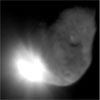
|
 |

Additional coverage for subscribers:
 VIDEO:
DEEP IMPACT SMASHES INTO COMET PLAY VIDEO:
DEEP IMPACT SMASHES INTO COMET PLAY
 VIDEO:
NARRATION OF IMPACTOR'S FINAL IMAGES PLAY VIDEO:
NARRATION OF IMPACTOR'S FINAL IMAGES PLAY
 VIDEO:
IMPACT PICTURES EXPLAINED BY COMET EXPERT PLAY VIDEO:
IMPACT PICTURES EXPLAINED BY COMET EXPERT PLAY
 VIDEO:
POST-IMPACT NEWS CONFERENCE DIAL-UP | BROADBAND VIDEO:
POST-IMPACT NEWS CONFERENCE DIAL-UP | BROADBAND
 AUDIO:
LISTEN TO POST-IMPACT NEWS CONFERENCE MP3 AUDIO:
LISTEN TO POST-IMPACT NEWS CONFERENCE MP3

 VIDEO:
"DEEP IMPACT: THE MISSION" MOVIE PLAY VIDEO:
"DEEP IMPACT: THE MISSION" MOVIE PLAY
 VIDEO:
"DIGGING OUT THE SCIENCE" PLAY VIDEO:
"DIGGING OUT THE SCIENCE" PLAY
 VIDEO:
RECAP OF IMPACTOR DEPLOY ACTIVITIES PLAY VIDEO:
RECAP OF IMPACTOR DEPLOY ACTIVITIES PLAY
 VIDEO:
PREVIEW OF TONIGHT'S ENCOUNTER TIMELINE PLAY VIDEO:
PREVIEW OF TONIGHT'S ENCOUNTER TIMELINE PLAY
 VIDEO:
LEARN MORE ABOUT THE SPACECRAFT PLAY VIDEO:
LEARN MORE ABOUT THE SPACECRAFT PLAY
 VIDEO:
SCIENCE DATA FROM COMET OUTBURSTS PLAY VIDEO:
SCIENCE DATA FROM COMET OUTBURSTS PLAY
 VIDEO:
SUNDAY MIDDAY STATUS REPORT DIAL-UP | BROADBAND 1 & 2 VIDEO:
SUNDAY MIDDAY STATUS REPORT DIAL-UP | BROADBAND 1 & 2
 VIDEO:
MISSION ENGINEERING BRIEFING DIAL-UP | BROADBAND VIDEO:
MISSION ENGINEERING BRIEFING DIAL-UP | BROADBAND
 VIDEO:
FRIDAY'S SCIENCE CONFERENCE DIAL-UP | BROADBAND VIDEO:
FRIDAY'S SCIENCE CONFERENCE DIAL-UP | BROADBAND
 MORE: DEEP IMPACT VIDEO COLLECTION! MORE: DEEP IMPACT VIDEO COLLECTION!

 VIDEO:
OVERVIEW OF NASA'S DEEP IMPACT MISSION QT VIDEO:
OVERVIEW OF NASA'S DEEP IMPACT MISSION QT
 VIDEO:
LEAD RESEARCHER PREVIEWS DEEP IMPACT SCIENCE QT VIDEO:
LEAD RESEARCHER PREVIEWS DEEP IMPACT SCIENCE QT
 VIDEO:
WATCH DEEP IMPACT PRE-FLIGHT NEWS BRIEFING QT VIDEO:
WATCH DEEP IMPACT PRE-FLIGHT NEWS BRIEFING QT
 VIDEO:
DEEP IMPACT BLASTS OFF ATOP DELTA 2 ROCKET QT VIDEO:
DEEP IMPACT BLASTS OFF ATOP DELTA 2 ROCKET QT
 VIDEO:
NARRATION OF DEEP IMPACT'S PRE-LAUNCH CAMPAIGN QT VIDEO:
NARRATION OF DEEP IMPACT'S PRE-LAUNCH CAMPAIGN QT
 VIDEO:
ON-PAD ASSEMBLY OF ROCKET SHOWN WITH NARRATION QT VIDEO:
ON-PAD ASSEMBLY OF ROCKET SHOWN WITH NARRATION QT
 SUBSCRIBE NOW SUBSCRIBE NOW

|
Deep Impact fires its bullet at Comet Tempel 1
NASA's Deep Impact probe released a compact, instrumented smart bomb Sunday, a copper-clad robotic kamikaze programmed to place itself in the path of a speeding comet early Monday for a scientifically spectacular 23,000-mph Fourth of July collision.
 FULL STORY FULL STORY
 |  |

|
 |
Planetary discovery
NASA researchers recently discovered the largest solid core ever found in an extrasolar planet, and their discovery confirms a planet formation theory. "For theorists, the discovery of a planet with such a large core is as important as the discovery of the first extrasolar planet around the star 51 Pegasi in 1995," says a theorist from the Tokyo Institute of Technology.
 FULL STORY FULL STORY
 |  |

|
 |
Scientists find mineral from ancient supernova
NASA and University of Arizona researchers have found pristine mineral grains that formed in an ancient supernova explosion.
 FULL STORY FULL STORY
 |  |

|
 |
It's official: Discovery launch set for July 13
NASA managers wrapped up a two-day flight readiness review Thursday and formally cleared the shuttle Discovery for blastoff July 13 on the first post-Columbia shuttle mission. If all goes well, the countdown will begin at 6 p.m. July 10 for a launch attempt at 3:50:47 p.m. on July 13, weather permitting.
 FULL STORY FULL STORY
 MISSION STATUS CENTER MISSION STATUS CENTER
 |  |

|
 |

Additional coverage for subscribers:
 VIDEO:
NASA ANNOUNCES LAUNCH DATE DIAL-UP | BROADBAND VIDEO:
NASA ANNOUNCES LAUNCH DATE DIAL-UP | BROADBAND
 AUDIO:
LISTEN TO THE ANNOUNCEMENT FOR IPOD AUDIO:
LISTEN TO THE ANNOUNCEMENT FOR IPOD
 MORE: SHUTTLE RETURN TO FLIGHT VIDEO LISTING MORE: SHUTTLE RETURN TO FLIGHT VIDEO LISTING

 VIDEO:
GRIFFIN'S ADDRESS TO NASA WORKERS DIAL-UP | BROADBAND VIDEO:
GRIFFIN'S ADDRESS TO NASA WORKERS DIAL-UP | BROADBAND
 AUDIO:
LISTEN TO THE ADDRESS FOR IPOD AUDIO:
LISTEN TO THE ADDRESS FOR IPOD
 VIDEO:
TUESDAY'S CONGRESSIONAL HEARING ON NASA'S FUTURE PLAY VIDEO:
TUESDAY'S CONGRESSIONAL HEARING ON NASA'S FUTURE PLAY
 SUBSCRIBE NOW SUBSCRIBE NOW

|
First flight of Falcon rocket moved to 'tropical paradise'
Flight restrictions imposed by a gigabuck spy satellite launch at California's Vandenberg Air Force Base have forced rocket-maker Space Exploration Technologies to shift the Falcon 1 booster's maiden flight to a remote Pacific isle.
 FULL STORY FULL STORY
 |  |

|
 |
Refined cosmic clock figures age of Milky Way
The University of Chicago's Nicolas Dauphas has developed a new way to calculate the age of the Milky Way that is free of the unvalidated assumptions that have plagued previous methods. Dauphas' method, which he reports in the latest issue of the journal Nature, can now be used to tackle other mysteries of the cosmos that have remained unsolved for decades.
 FULL STORY FULL STORY
 |  |

|
 |
OTHER HEADLINES Additional stories today
|
 |
NASA has research agreement with Lehigh University -- NASA has announced an agreement with Lehigh University, Bethlehem, Pa. It gives NASA researchers access to Lehigh's cutting-edge nanotechnology and electron microscopy facilities.
|
 |
NASA's Cassini reveals lake-like feature on Titan
Scientists are fascinated by a dark, lake-like feature recently observed on Saturn's moon Titan. NASA's Cassini spacecraft captured a series of images showing a marking, darker than anything else around it. It is remarkably lake-like, with smooth, shore-like boundaries unlike any seen previously on Titan.
 FULL STORY FULL STORY
 |  |

|
 |
NASA set for debate over shuttle readiness to launch
Twenty-nine months after the Columbia accident, NASA's top managers will gather at Kennedy Space Center on Wednesday and Thursday to debate the readiness of putting another space shuttle in the air.
 MISSION STATUS CENTER MISSION STATUS CENTER
 |  |

|
 |

Additional coverage for subscribers:
 VIDEO:
GRIFFIN'S ADDRESS TO NASA WORKERS DIAL-UP | BROADBAND VIDEO:
GRIFFIN'S ADDRESS TO NASA WORKERS DIAL-UP | BROADBAND
 AUDIO:
LISTEN TO THE ADDRESS FOR IPOD AUDIO:
LISTEN TO THE ADDRESS FOR IPOD
 VIDEO:
TUESDAY'S CONGRESSIONAL HEARING ON NASA'S FUTURE PLAY VIDEO:
TUESDAY'S CONGRESSIONAL HEARING ON NASA'S FUTURE PLAY
 MORE: SHUTTLE RETURN TO FLIGHT VIDEO LISTING MORE: SHUTTLE RETURN TO FLIGHT VIDEO LISTING
 SUBSCRIBE NOW SUBSCRIBE NOW

|
Comet Tempel 1 has another 'sneeze' outburst
NASA's Deep Impact spacecraft have observed a massive, short-lived outburst of ice or other particles from comet Tempel 1 that temporarily expanded the size and reflectivity of the cloud of dust and gas (coma) that surrounds the comet nucleus.
 FULL STORY FULL STORY
 DEEP IMPACT PREVIEW DEEP IMPACT PREVIEW
 |  |

|
 |
Hibernating spacecraft awakens for comet impact
The Submillimeter Wave Astronomy Satellite has been asleep on orbit for the past 11 months. SWAS operators placed it into hibernation after a highly successful 5.5-year mission highlighted by the discovery of a swarm of comets evaporating around an aging red giant star. Now, they have awakened SWAS again for the first-ever opportunity to study a comet on a collision course with a U.S. space probe.
 FULL STORY FULL STORY
 |  |

|
 |
Refined cosmic clock figures age of Milky Way
The University of Chicago's Nicolas Dauphas has developed a new way to calculate the age of the Milky Way that is free of the unvalidated assumptions that have plagued previous methods. Dauphas' method, which he reports in the latest issue of the journal Nature, can now be used to tackle other mysteries of the cosmos that have remained unsolved for decades.
 FULL STORY FULL STORY
 |  |

|
 |
OTHER HEADLINES Additional stories today
|
 |
NASA has research agreement with Lehigh University -- NASA has announced an agreement with Lehigh University, Bethlehem, Pa. It gives NASA researchers access to Lehigh's cutting-edge nanotechnology and electron microscopy facilities.
|
 |
NASA's Cassini reveals lake-like feature on Titan
Scientists are fascinated by a dark, lake-like feature recently observed on Saturn's moon Titan. NASA's Cassini spacecraft captured a series of images showing a marking, darker than anything else around it. It is remarkably lake-like, with smooth, shore-like boundaries unlike any seen previously on Titan.
 FULL STORY FULL STORY
 |  |

|
 |
NASA set for debate over shuttle readiness to launch
Twenty-nine months after the Columbia accident, NASA's top managers will gather at Kennedy Space Center on Wednesday and Thursday to debate the readiness of putting another space shuttle in the air.
 MISSION STATUS CENTER MISSION STATUS CENTER
 |  |

|
 |

Additional coverage for subscribers:
 VIDEO:
GRIFFIN'S ADDRESS TO NASA WORKERS DIAL-UP | BROADBAND VIDEO:
GRIFFIN'S ADDRESS TO NASA WORKERS DIAL-UP | BROADBAND
 AUDIO:
LISTEN TO THE ADDRESS FOR IPOD AUDIO:
LISTEN TO THE ADDRESS FOR IPOD
 VIDEO:
TUESDAY'S CONGRESSIONAL HEARING ON NASA'S FUTURE PLAY VIDEO:
TUESDAY'S CONGRESSIONAL HEARING ON NASA'S FUTURE PLAY
 MORE: SHUTTLE RETURN TO FLIGHT VIDEO LISTING MORE: SHUTTLE RETURN TO FLIGHT VIDEO LISTING
 SUBSCRIBE NOW SUBSCRIBE NOW

|
|
Read our earlier news archive page.
|



